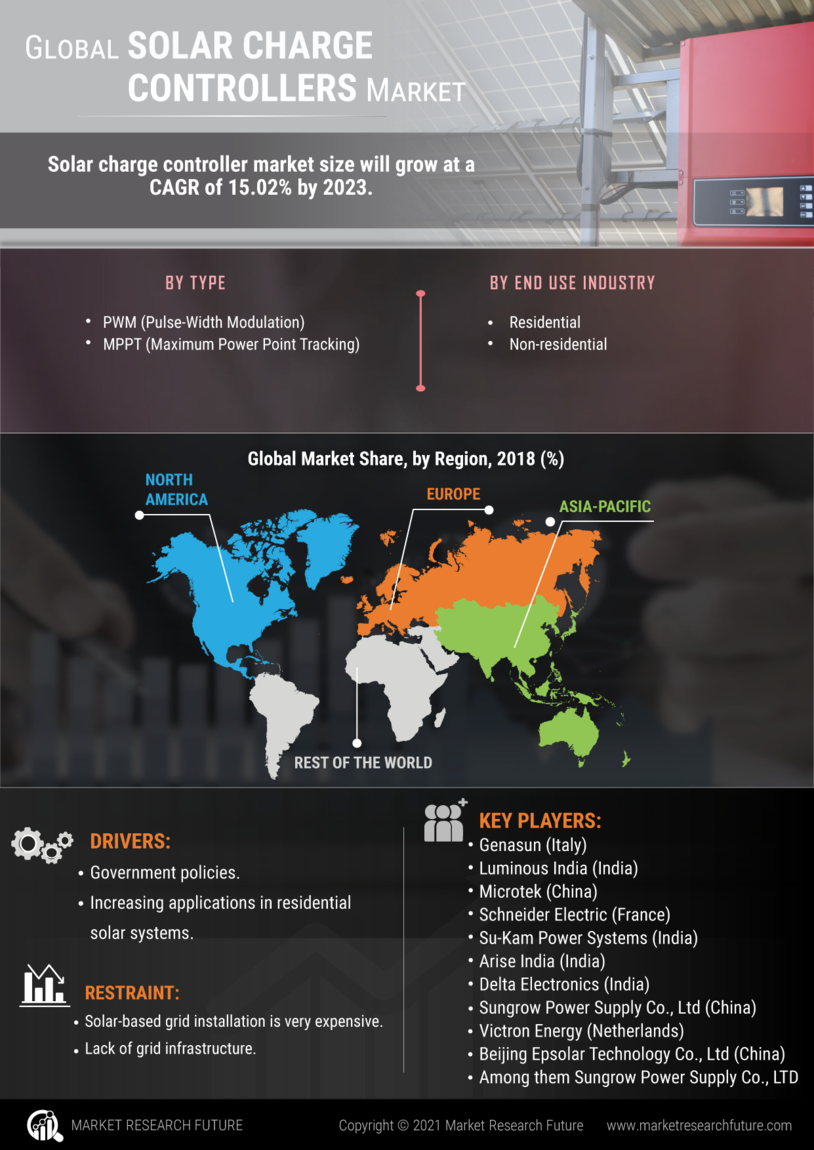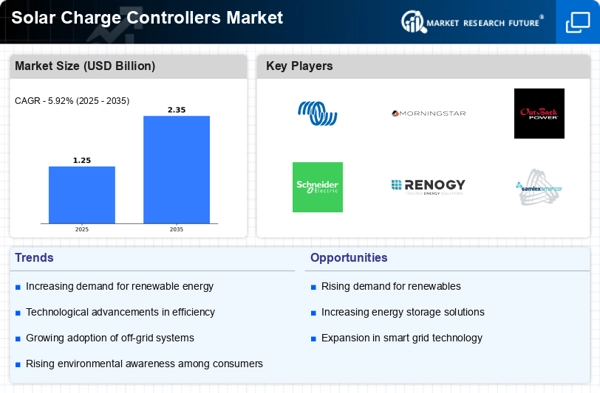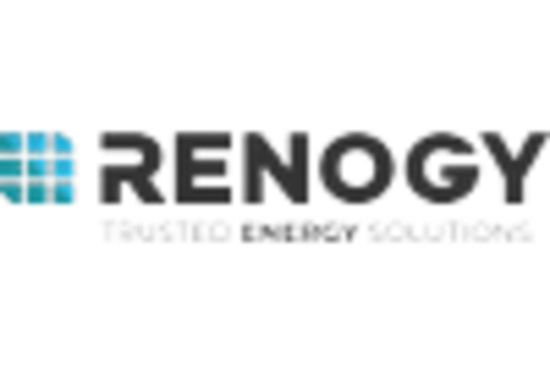Rising Off-Grid Applications
The growing trend towards off-grid applications is a notable driver for the Solar Charge Controllers Market. As more individuals and communities seek energy independence, the demand for off-grid solar systems is increasing. These systems often require solar charge controllers to manage battery charging and discharging effectively. The off-grid solar market is projected to grow substantially, with estimates suggesting a compound annual growth rate of over 20% in the coming years. This growth is likely to propel the Solar Charge Controllers Market, as manufacturers develop specialized products tailored for off-grid applications, enhancing energy reliability and efficiency.
Government Incentives and Policies
Government incentives and supportive policies play a crucial role in driving the Solar Charge Controllers Market. Many countries have implemented favorable regulations and financial incentives to promote the adoption of solar energy. For instance, tax credits, rebates, and grants for solar installations encourage consumers to invest in solar technology, which in turn increases the demand for solar charge controllers. According to recent data, regions with strong policy support have witnessed a significant uptick in solar installations, leading to a corresponding rise in the Solar Charge Controllers Market. This trend is expected to continue as governments aim to meet renewable energy targets.
Increasing Demand for Renewable Energy
The rising demand for renewable energy sources is a primary driver for the Solar Charge Controllers Market. As nations strive to reduce their carbon footprints and transition to sustainable energy solutions, solar energy has emerged as a viable alternative. The International Energy Agency indicates that solar power capacity has been expanding rapidly, with projections suggesting a potential increase of over 600 GW by 2025. This surge in solar installations necessitates efficient energy management systems, such as solar charge controllers, to optimize energy storage and usage. Consequently, the Solar Charge Controllers Market is likely to experience robust growth as more consumers and businesses adopt solar technology.
Technological Innovations in Charge Controllers
Technological advancements in solar charge controllers are significantly influencing the Solar Charge Controllers Market. Innovations such as Maximum Power Point Tracking (MPPT) technology enhance the efficiency of solar energy systems by optimizing the power output from solar panels. Furthermore, the integration of smart technology, including remote monitoring and control features, is becoming increasingly prevalent. These advancements not only improve the performance of solar charge controllers but also attract a broader consumer base. As a result, the Solar Charge Controllers Market is poised for expansion, with manufacturers investing in research and development to create more efficient and user-friendly products.
Consumer Preference for Energy Storage Solutions
Consumer preference for energy storage solutions is increasingly shaping the Solar Charge Controllers Market. As energy costs rise and the need for reliable power sources becomes more pronounced, consumers are turning to solar energy systems equipped with storage capabilities. Solar charge controllers are essential components in these systems, ensuring optimal battery performance and longevity. Market data indicates that the energy storage market is expected to grow significantly, with projections estimating a value exceeding $20 billion by 2026. This trend suggests a strong correlation between the growth of energy storage solutions and the Solar Charge Controllers Market, as more consumers seek integrated solar solutions.


















Leave a Comment